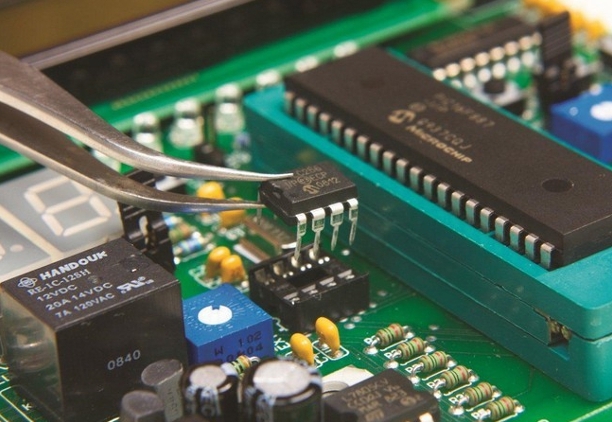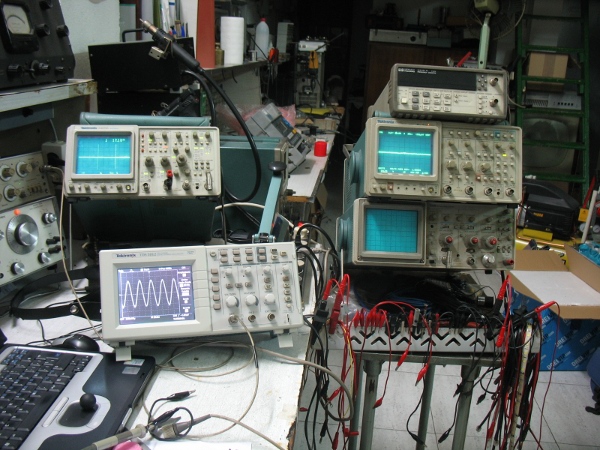Aquí os presento un reloj digital mu completo que con muy pocos componentes podemos llegar a construir.
Este proyecto necesita:
- Una placa Arduino
-Bus i2c para la pantalla LCD
-Pantalla LCD 16 X 2
-Reloj DS1307 RTC
-Sensor de humedad y temperatura DHT 11
-Cables de conexión
-Protoboard
Para la construcción de esta fantástica estación meteorológica hemos decidido utilizar un bus I2C con el fin de ahorrar en cables y para que el producto final sea mas limpio y profesional.
El esquema de conexión es el siguiente:
No nos olvidemos de la parte mas importante !!! El código.
/*-----( Import needed libraries )-----*/
#include <dht11.h>
#include <Wire.h>
#include <LiquidCrystal_I2C.h>
#include <Time.h>
#include <DS1307RTC.h>
//const char* zile[] =
// { "Lun", "Mar", "Mie", "Jue", "Vie", "Sab", "Dom"}; //days of the week
const char* mesi[] =
{"Dic", "Ene", "Feb", "Mar", "Abr", "May", "Jun", "Jul", "Ago", "Sep", "Oct", "Nov" }; //months of the week
// {"Dic", "Gen", "Feb", "Mar", "Apr", "Mag", "Giu", "Lug", "Ago", "Set", "Ott", "Nov" }; //months of the week
byte termometru[8] = //icon for termometer
{
B00100,
B01010,
B01010,
B01110,
B01110,
B11111,
B11111,
B01110
};
byte picatura[8] = //icon for water droplet
{
B00100,
B00100,
B01010,
B01010,
B10001,
B10001,
B10001,
B01110,
};
/*-----( Declare objects )-----*/
// set the LCD address to 0x20 for a 16 chars 2 line display
// Set the pins on the I2C chip used for LCD connections:
// addr, en,rw,rs,d4,d5,d6,d7,bl,blpol
//LiquidCrystal_I2C lcd(0x20, 4, 5, 6, 0, 1, 2, 3, 7, NEGATIVE); // Set the LCD I2C address
//added by Marco Sessa
LiquidCrystal_I2C lcd(0x27,16,2); // set the LCD address to 0x20(Cooperate with 3 short circuit caps) if your model is different from mine.
dht11 DHT11;
/*-----( Declare Constants, Pin Numbers )-----*/
#define DHT11PIN 2 //dht11 signal pin connected to D2
void setup() /*----( SETUP: RUNS ONCE )----*/
{
Wire.begin();
lcd.begin(16,2); // initialize the lcd for 16 chars 2 lines, turn on backlight
lcd.backlight();
lcd.clear();
lcd.createChar(1,termometru);
lcd.createChar(2,picatura);
// part code from http://tronixstuff.wordpress.com/
Wire.beginTransmission(0x68);
Wire.write(0x07); // move pointer to SQW address
Wire.write(0x10); // sends 0x10 (hex) 00010000 (binary) to control register - turns on square wave
Wire.endTransmission();
// end part code from http://tronixstuff.wordpress.com/
setSyncProvider(RTC.get);
}/*--(end setup )---*/
void loop() /*----( LOOP: RUNS CONSTANTLY )----*/
{
afisare_temperatura(); //displaying temperature
data_si_ora(); //displaying date and time
}
void afisare_temperatura()
{
int chk = DHT11.read(DHT11PIN);
lcd.setCursor(1, 1);
lcd.write(1);
lcd.setCursor(3, 1);
lcd.print((float)DHT11.temperature, 0);
lcd.setCursor(5, 1);
lcd.print((char)223); //degree sign
lcd.print("C");
lcd.setCursor(9, 1);
lcd.write(2);
lcd.setCursor(11, 1);
lcd.print((float)DHT11.humidity, 0);
lcd.print("%");
delay(2000);
}
void data_si_ora()
{
tmElements_t tm;
(RTC.read(tm));
lcd.setCursor(0, 0);
afisare2cifre(tm.Hour);
lcd.print(":");
afisare2cifre(tm.Minute);
lcd.setCursor(7,0);
afisare2cifre(tm.Day);
lcd.print(" ");
lcd.print(tm.Month[mesi]);
lcd.print(" ");
lcd.print(tmYearToCalendar(tm.Year)-2000);
// lcd.setCursor(12,1); // this code is used for displaying day of the week
// lcd.print(tm.Wday[zile-2]); //it's disabled because for some reason it doesn't work on i2c display
}
void afisare2cifre(int numar) { //this adds a 0 before single digit numbers
if (numar >= 0 && numar < 10) {
lcd.write('0');
}
lcd.print(numar);
}









